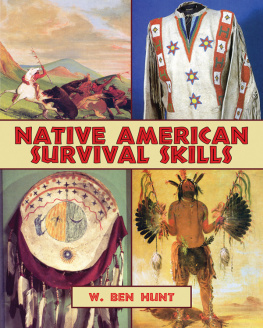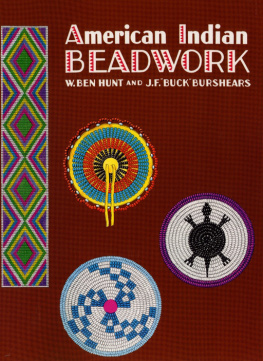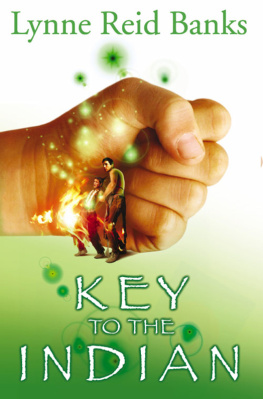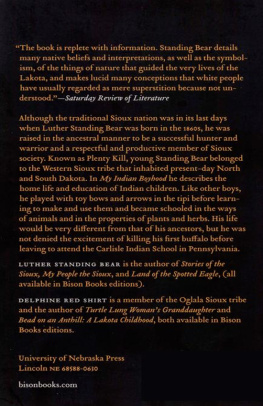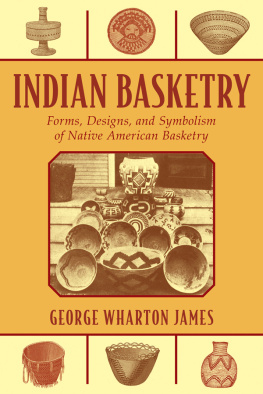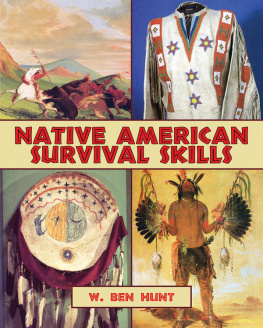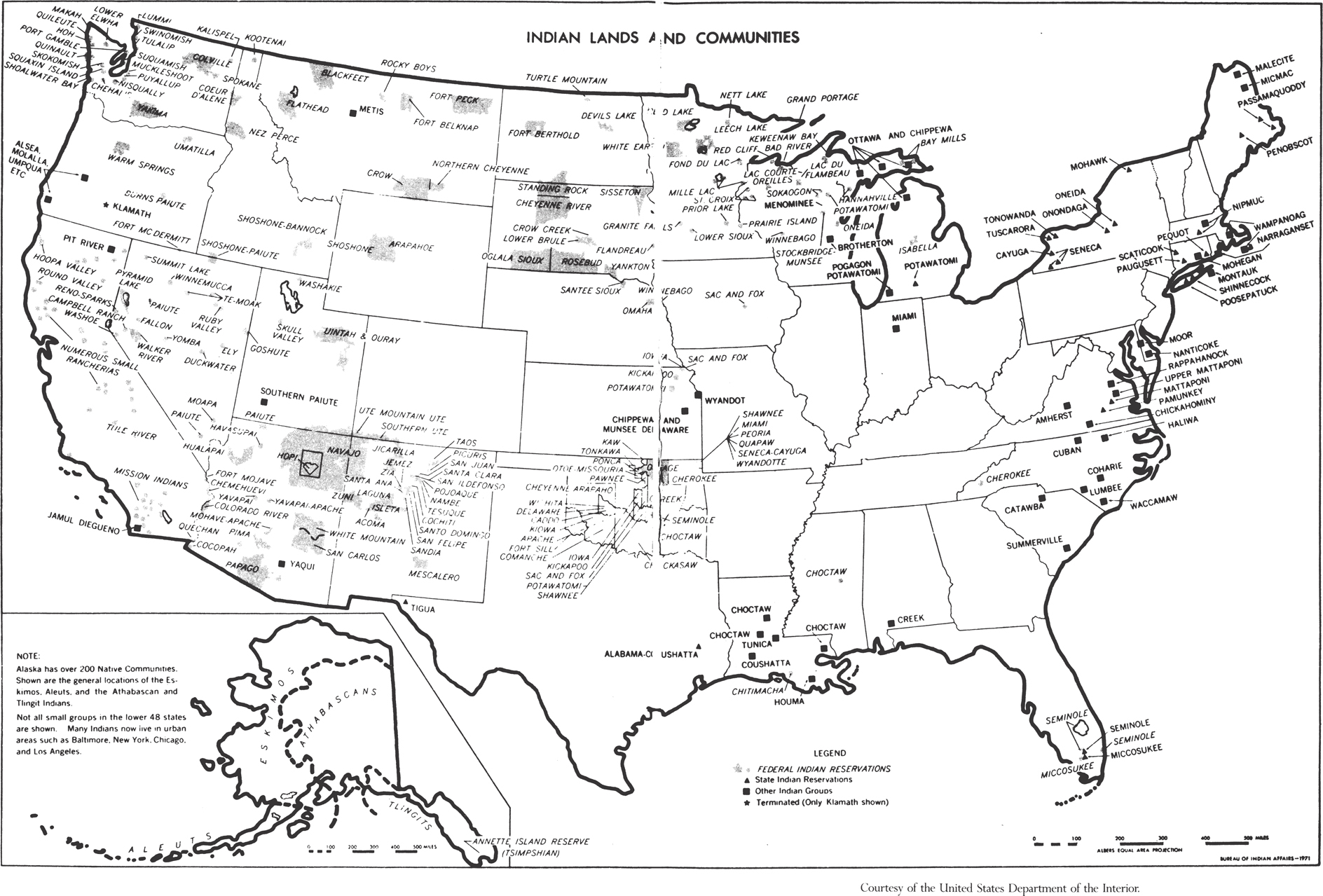Copyright 2010 by Skyhorse Publishing, Inc.
All Rights Reserved. No part of this book may be reproduced in any manner without the express written consent of the publisher, except in the case of brief excerpts in critical reviews or articles. All inquiries should be addressed to Skyhorse Publishing, 555 Eighth Avenue, Suite 903, New York, NY 10018.
Skyhorse Publishing books may be purchased in bulk at special discounts for sales promotion, corporate gifts, fund-raising, or educational purposes. Special editions can also be created to specifications. For details, contact the Special Sales Department, Skyhorse Publishing, 555 Eighth Avenue, Suite 903, New York, NY 10018 or info@skyhorsepublishing.com.
www.skyhorsepublishing.com
10 9 8 7 6 5 4 3 2 1
Library of Congress Cataloging-in-Publication Data
Hunt, W. Ben (Walter Ben), 1888-1970.
Native American survival skills / W. Ben Hunt.
p. cm.
Originally published: New York : Outdoor Life Books : Meredith Press, 1991, under title
American Indian survival skills.
ISBN 978-1-60239-765-1
1. Indian craft--Handbooks, manuals, etc. 2. Indians of North America--Industries--Handbooks, manuals, etc. 3. Outdoor life--North America--Handbooks, manuals, etc. 4. Survival skills--North America--Handbooks, manuals, etc. 5. Wilderness survival--North America--Handbooks, manuals, etc. I. Hunt, W. Ben (Walter Ben), 1888-1970. American Indian survival skills. II. Title.
TT22.H85 2009
745.5--dc22
2009025068
Printed in the United States of America
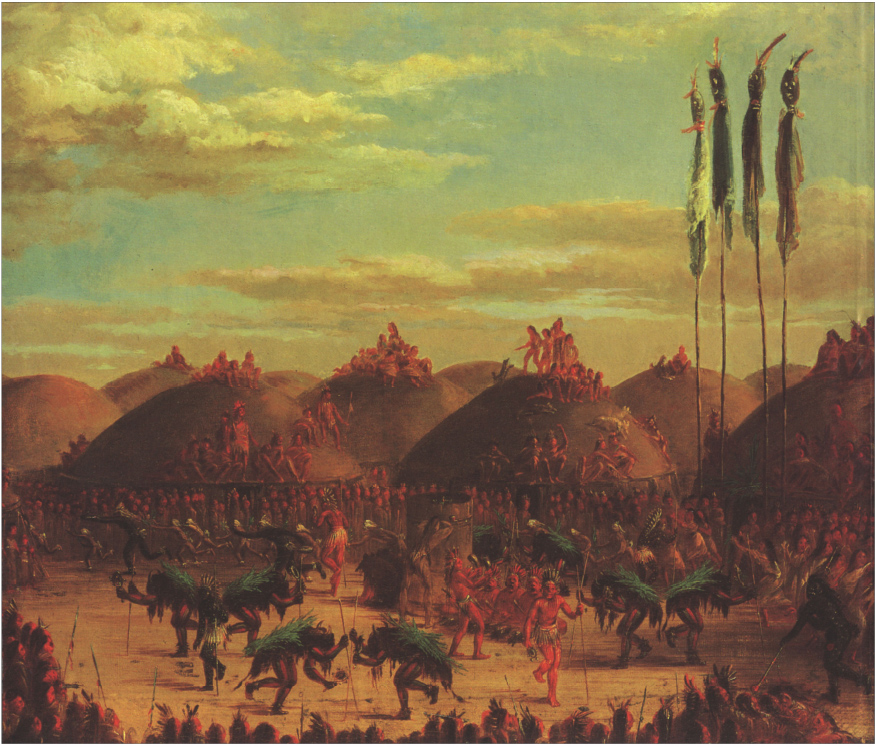
Bull Dance, Mandan-O-Kee-pa ceremony, George Catlin, 1832.
Photograph courtesy of Smithsonian Institution, National Museum of the American Indian.
EDITOR'S INTRODUCTION
W. Ben Hunt was born in Wisconsin over a hundred years ago. Most of his life was spent in teaching, art work, writings and lecturing about Indiancraft and campcraft. He was a self-taught expert on the crafts of the Plains and Woodland Indians, and he spent several years traveling in the Southwest to acquaint himself with the techniques of silverwork that are part of the Navajo and Hopi tradition.
Native American Survival Skills is compiled from several books that were published in the late 1930s and early 1940s. We have tried to collect the most usable and amusing projects and assemble them in a logical and clear organization.
Although most of us will probably never be forced to use our own hands, wits, and woodcraft to survive on a camping trip or in the woods, a knowledge of such skills is invaluable. Everyone should be able to use a knife, ax, or thongs, to make simple tools and equipment. And, being able to survive using your own Indian woodcraft skills makes you feel so confident it is worth collecting the knowledge.
Many of the authentic methods for making things that are shown in this book are not known by younger Indians. Much of the information has been obtained through interviews with old-timers, and through careful research into Indian folklore and skin paintings.
For example, the weaving of the beautiful woodland Indian bags is an art that has almost disappeared.
When using this book, try to think like the Indian. Select what you can from nature, adapt it for your own use, make your own tools, and always be aware of the bounty of materials that is part of the American Indian heritage. Give thanks for the saplings, the rough leather thongs, and the colorful nature-inspired designs. In using the techniques of woodcraft and campcraft of the American Indian, you are fashioning objects that re-create the time and life of a great people. But, most of all, enjoy the forests, and live for and with the land that the Indians loved so well.
This edition of W. Ben Hunt's work was created with the help of two wonderful researchers: Susan Otto of the Milwaukee Public Museum Photo Collection in Milwaukee, Wisconsin, and Laura Nash of the Museum of the American Indian in New York City Laura Nash allowed the editors and designer to visit the museum, and helped access photographs that seemed to reflect the projects in W. Ben Hunt's illustrations. Susan Otto sent us dozens of photocopies of artifacts and helped us select from her extensive files. This work is time consuming, and we appreciate the extra effort that was made.
CONTENTS
Courtesy of the United States Department of the Interior.
AN INTRODUCTION TO SURVIVAL SKILLS
I t may be well to mention that it is not necessary to follow the instructions accompanying each plate to the last detail. Other materials than those mentioned may serve just as well. If, for instance, no rawhide is available for thongs, the so-called rawhide or pigskin lacing may be used, as well as good heavy cord waxed if necessaryor soft copper wire, the ends of which are twisted and bent down so as not to scratch. The tom-tom, for example, may be made of some other leather. Its tone may not be the same as that of one made with rawhide, but it will sound fairly well and will look equally well after it has been decorated.
The directions given for soaking or stretching the rawhide must, however, be followed also for the substituted leather. Then, too, while the projects are proportioned correctly, there are times when the materials at hand will not permit making them the exact size or shape shown. In such cases the designs may, of course, be altered, using the drawings as a basis.
The Indian worked with the things he had on hand. Years ago, he decorated birch-bark baskets and many other articles with dyed porcupine quills. At that time these quills were easy to get. Now beads are cheap and can be more easily obtained. Beads consequently are used more often than quills. Today, tepees are no longer made of skins sewed together, but of canvas. Leggings that were at one time made of soft buckskin are now mostly made of blanket cloth or other material that may be on hand or obtained easily
As soon as the white man brought iron to this country, the Indian made use of it for arrowheads, knives, and tomahawks. The stone and flint, which he had previously used for these purposes, were discarded. Therefore, use the material on hand and substitute it for the material that is specified. Watercolor paints are just as bright and beautiful as those prepared with oil. However, if water colors are used they should be lacquered or varnished to protect them against moisture. If beads are not available for decorating, paint the designs on the wood or leather or cloth with glossy enamel or lacquer. A brightly decorated buckskin vest at a recent powwow proved, upon closer inspection to have painted instead of beaded decorations.
W. BEN HUNT
BASIC TOOLS AND MATERIALS
The Workshop
P robably the most expensive piece of equipment is the workbench. It should be quite rigid and strong enough to hold a 3- or 4-inch vise. A few shelves and tool racks to keep materials and tools complete the home workshop. As more and more things are added, they are gradually placed in the most convenient places. Cupboards with glass doors may be built to keep things where they wont get dusty.

